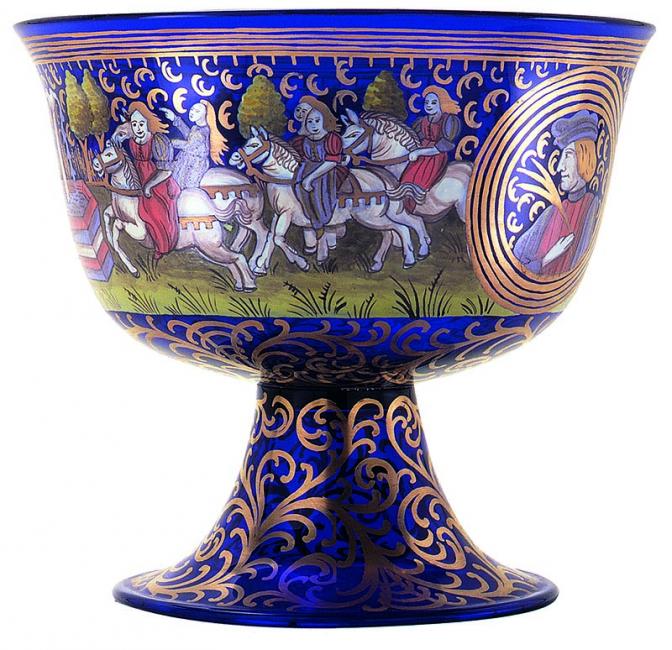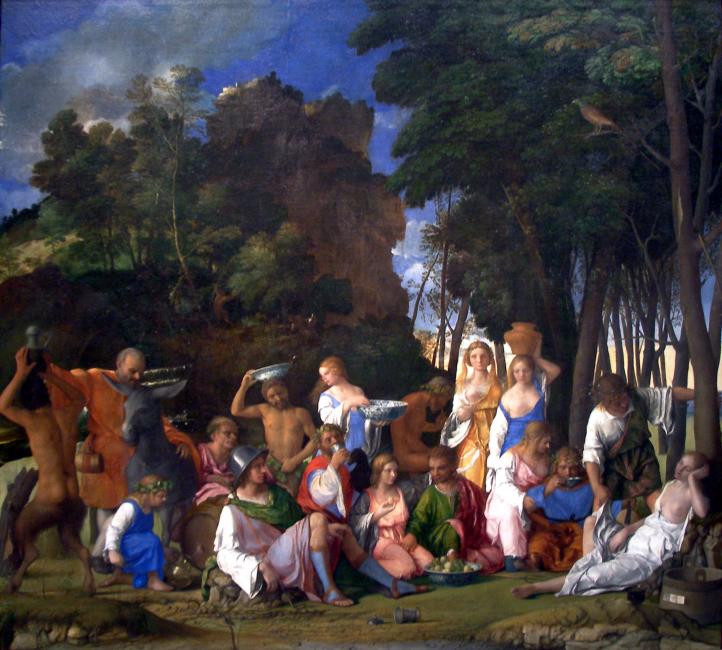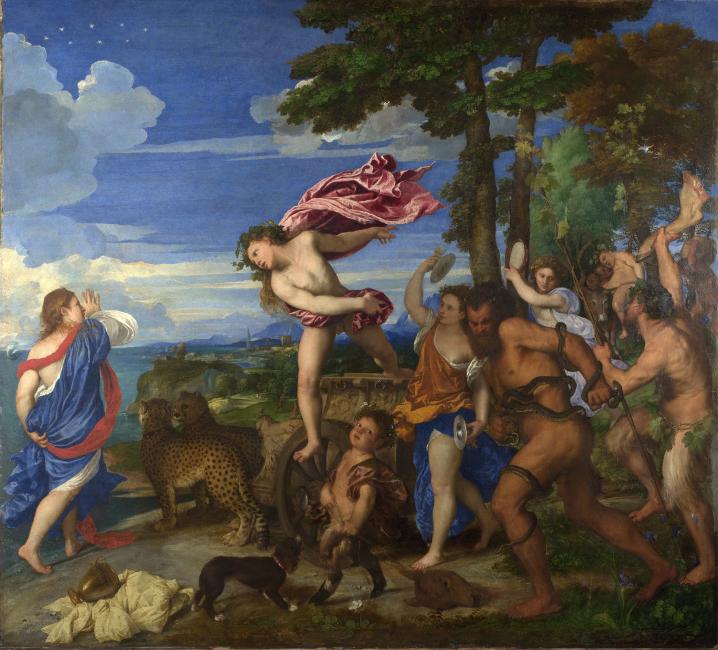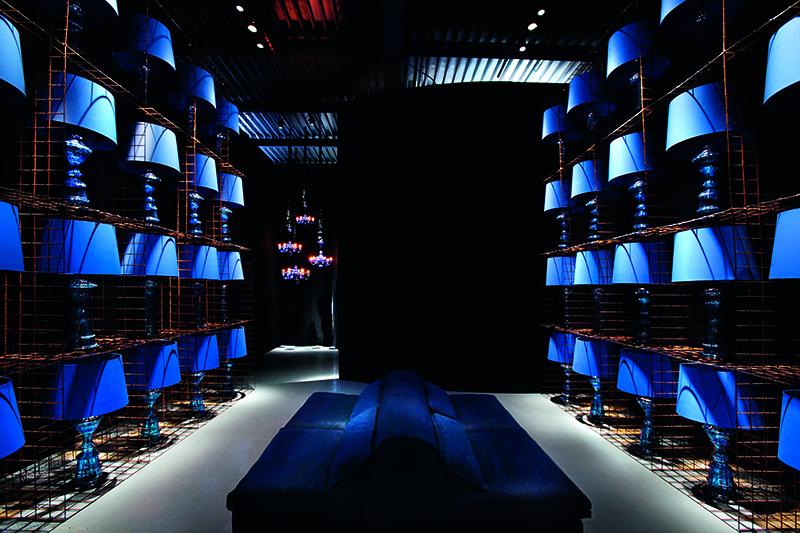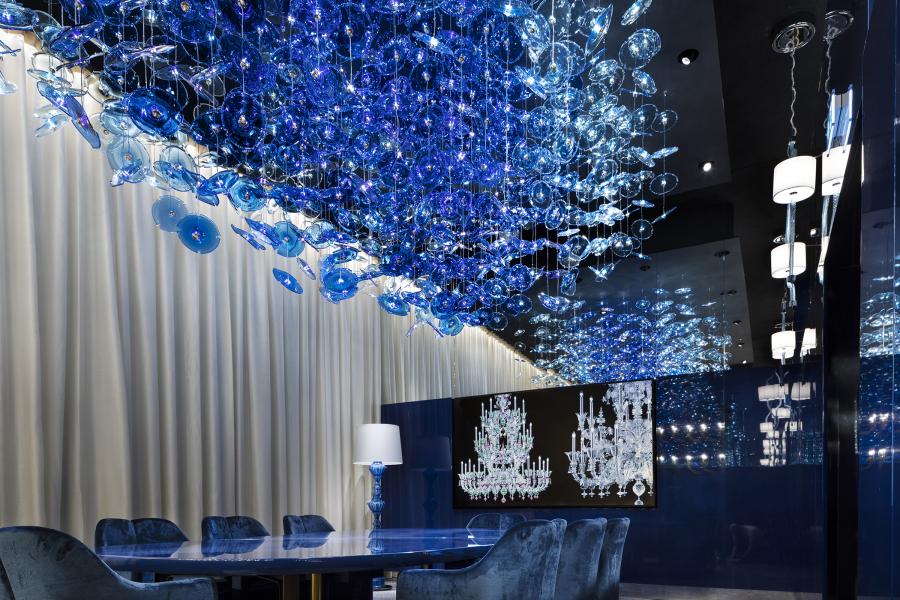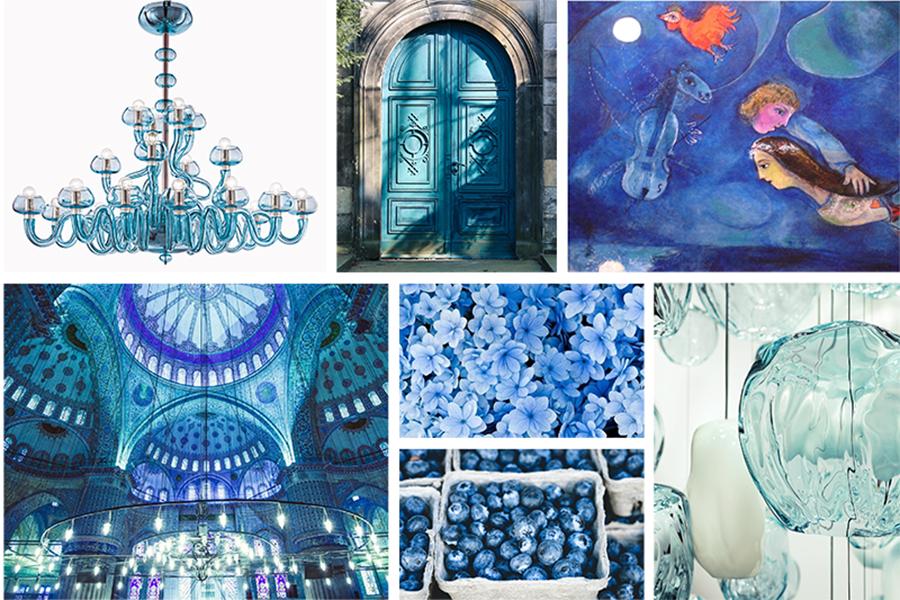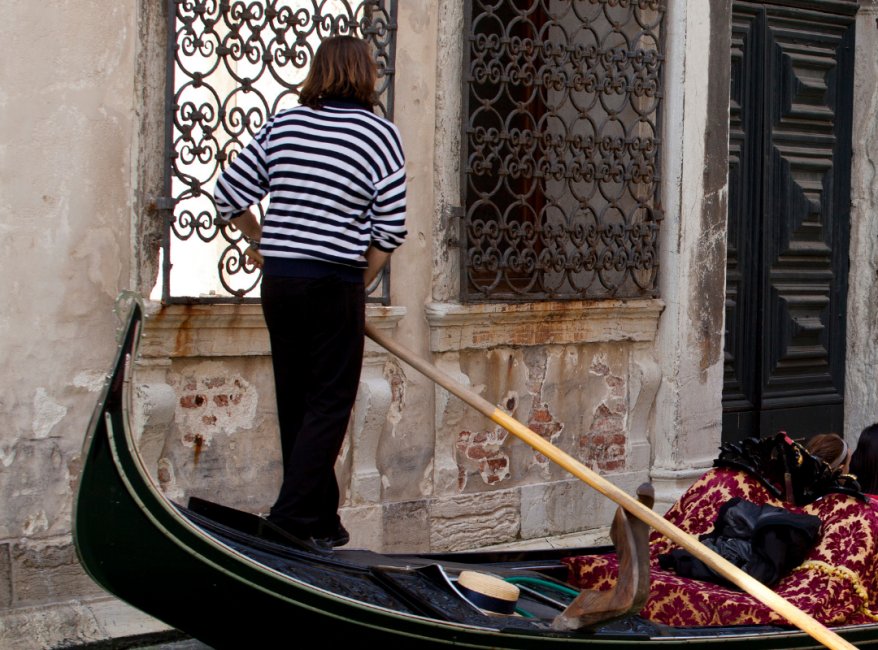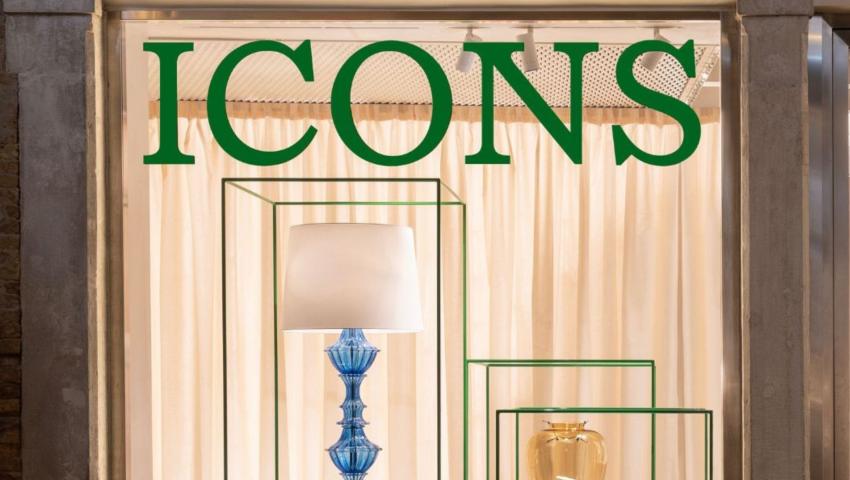Expressive and romantic, blue has liberated the imagination of many artists and poets.
In the creations of Barovier&Toso, blue underscores the refinement of Venetian crystal, strengthening its personality and precious allure.
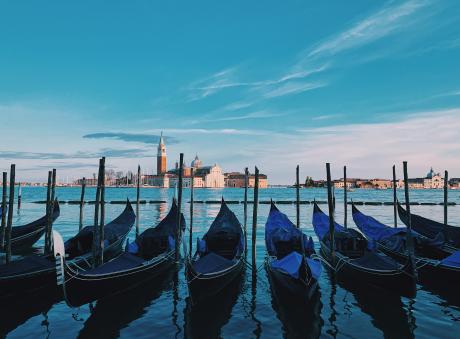
Those who have been to Venice understand the vanity with which the sky seems to admire itself in the water of the lagoon, permeating the canals with pale and intense shades. Precisely such landscapes inspired Angelo Barovier to make one of his most famous creations: the wedding cup produced approximately in 1445. Entirely in blown glass, the “Coppa Barovier” is totally painted by hand and decorated in gold, with ornamental motifs and glazed medallions that glow in contrast with the intense blue of the chalice. Now conserved in the Murano Glass Museum, this is a Renaissance masterpiece of the glassmaker’s art.
The world of art always conceals remarkable surprises, and one of them is connected precisely with blue glass. In the Renaissance, the glassworks and workshops were able to develop a new pigment, Cobalt Blue, grinding blue glass together with water. Of extraordinary intensity but less costly than the well-known Ultramarine, it soon became the primary colour in the range of many artists at the time: a pigment created from glass, and cherished – perhaps precisely for this reason – by Venetian painters like Bellini and Titian.
The history of blue is truly fascinating, and it brings a smile to think that it can be considered a “young” hue with respect to red, white or black, already found in European cave paintings from 20,000 years ago. To come across the use of blue, we have to advance to the days of the ancient Egyptians, about 6000 years ago. According to historians, they were the first to recognize and appreciate this colour, endowing it with a precise meaning. For the Egyptians, blue symbolized sky, water, life, rebirth, hence making it a divine colour, above and beyond its precious value – this was the blue of lapis lazuli and azurite, in fact.
From ancient Egypt to the present, the appeal of the colour blue has grown by leaps and bounds, in the East and the West, from artistic jewellery to architecture and poetry. Barovier&Toso has enhanced and interpreted these tones, even choosing blue as the company’s colour for a certain period of time.
When Palazzo Barovier was designed with its monochrome rooms, blue played a leading role to create the image of the boardroom, with the dominant presence of Exagon. A cascade of thin, impalpable leaves of blue Venetian crystal pays tribute to this colour and its ability to generate harmony and peace.
Acquamare, bluino and bluastro are the various shades included in the Barovier&Toso range: three different variants that give handmade Venetian crystal its characteristic force, luminosity and expressive impact. The creations of Barovier&Toso are delicate and romantic, eccentric and regal, captivating the eyes with their extraordinary elegance. The embody the whimsy of those who want to create magical atmospheres, and the dreams of those who enjoy the most sophisticated, refined juxtapositions.
SECRETS FROM THE FURNACE
The blue colour, in all its shades, is much in demand, so the melting furnaces are often busy in its preparation for the subsequent processes of glassblowing. This colour, however, requires particular care in the handling of the crucibles. Blue Venetian crystal, especially in the darker tones, is very tenacious and adheres to the walls of the crucible with remarkable force. Therefore, when the melting process is finished, repeated “washing” with transparent glass is necessary to permit the use of the crucible for a new colour, and to eliminate any vestiges of the hue in successive operations.
HINTS&TIPS
Every evening, the gondolier has the task of “stowing the gondola for the night”: at the end of a hard day’s work, he removes the rowlock and the parécio (all the furnishings and decorations) and covers the boat with protective waterproof blue tarps. Their colour is strictly dark blue, as stipulated by the precise municipal regulations that permit the use of no other hues, apart from the white covers that can be utilized in the summer. Once the gondolier has put the boat “da notte”, he is not allowed to go back to work that same day.
